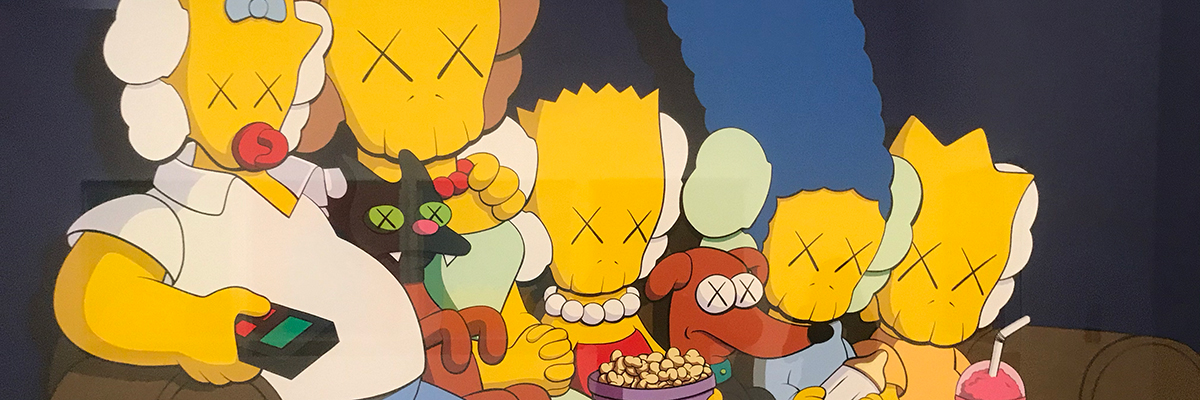Highbrow art institutions have coalesced behind a small recurring collection of well-known graffiti/street artists in recent years, granting them a lot of space and a powerful entrée to blue-check media parties, blue-chip platforms, and blue blood collectors. The bigger (and frequently well-funded) names are often the easiest to explain to an unfamiliar general audience of art viewers and, of course, will appeal to that younger demographic everyone is after. It shouldn’t surprise anyone when even the New York City Ballet spawned a series of collaborations with street artists in the last five years to bolster flagging attendance due to aging and, well, dying fans.
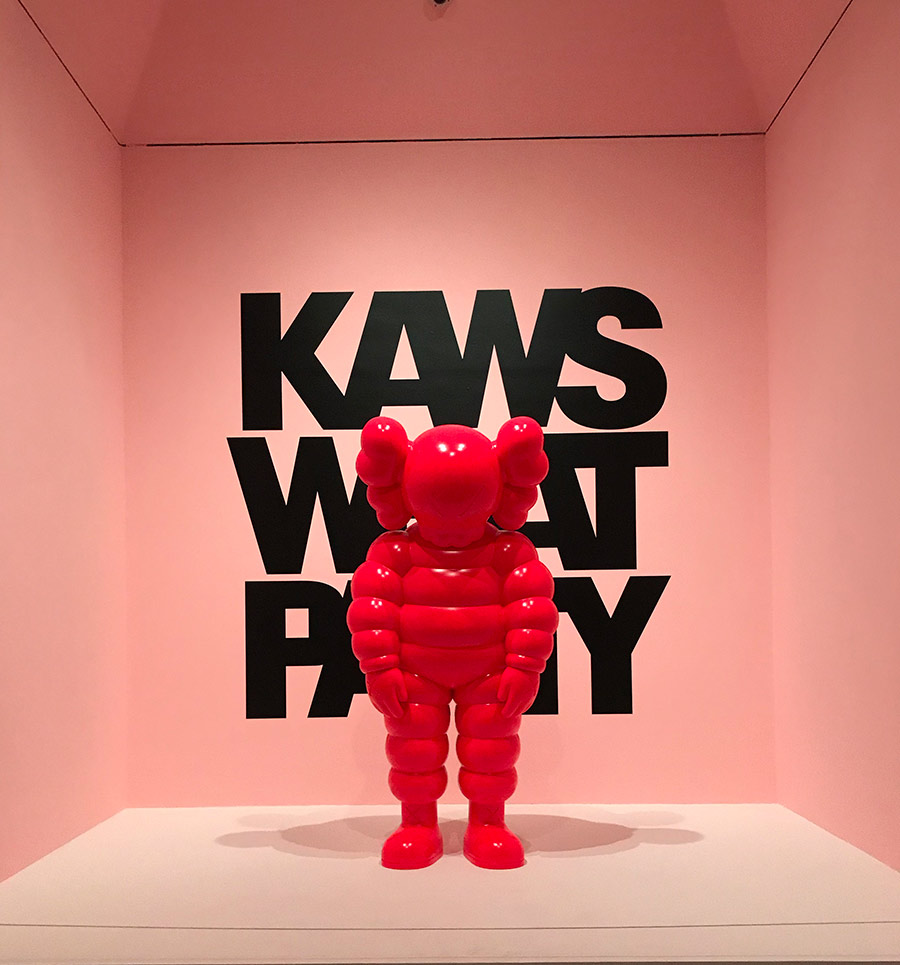
Graffiti and street art have long since become bywords of edgy culture that can be commodified and proudly owned by all strata of incomes and stations, and our interest in all things street abides still. Brands have ironically manipulated pop icons and sprinkle paint splashes, drips, and bubble tags across everything from ladies’ clutches to watches to vapes. Fashion continues to dip into this well of light anarchy as a signal of cool rebellion, as sold across a gamut – from couture Saint Laurent to off-the-rack Walmart. Sometimes the imagery or lettering is easily recognizable as a particular artist’s style on the products for sale. Other times a staff graphic designer has skillfully approximated the stencils, wheat-pastes, and drippy tags without steering into copyright infringement territory.
In an increasingly dire economic landscape where retail giants like J.C. Penney, Neiman Marcus, and J. Crew are falling like redwoods, opportunities for in-person branding experiences and sales are popping up in previously unexpected places. Are you at a store or an art exhibition? Does there need to be a stark delineation between the two? It’s not just Volkswagen sponsoring Kraftwerk at MOMA. You are also finding brands like Adidas setting up a pop-up shop inside Roger Gastman’s Beyond The Streets traveling exhibition and selling in the well-stock and beautifully curated store. In the era of experiential retail like the NIKE and Dick’s Sporting Goods stores, the lines between an art gallery and sales floor have become completely blurred. Think of the dance between art and commerce in multiple partnerships, including UNIQLO and MOMA, VANS and the Van Gogh Museum, and LEVI’s at LA MoCA.
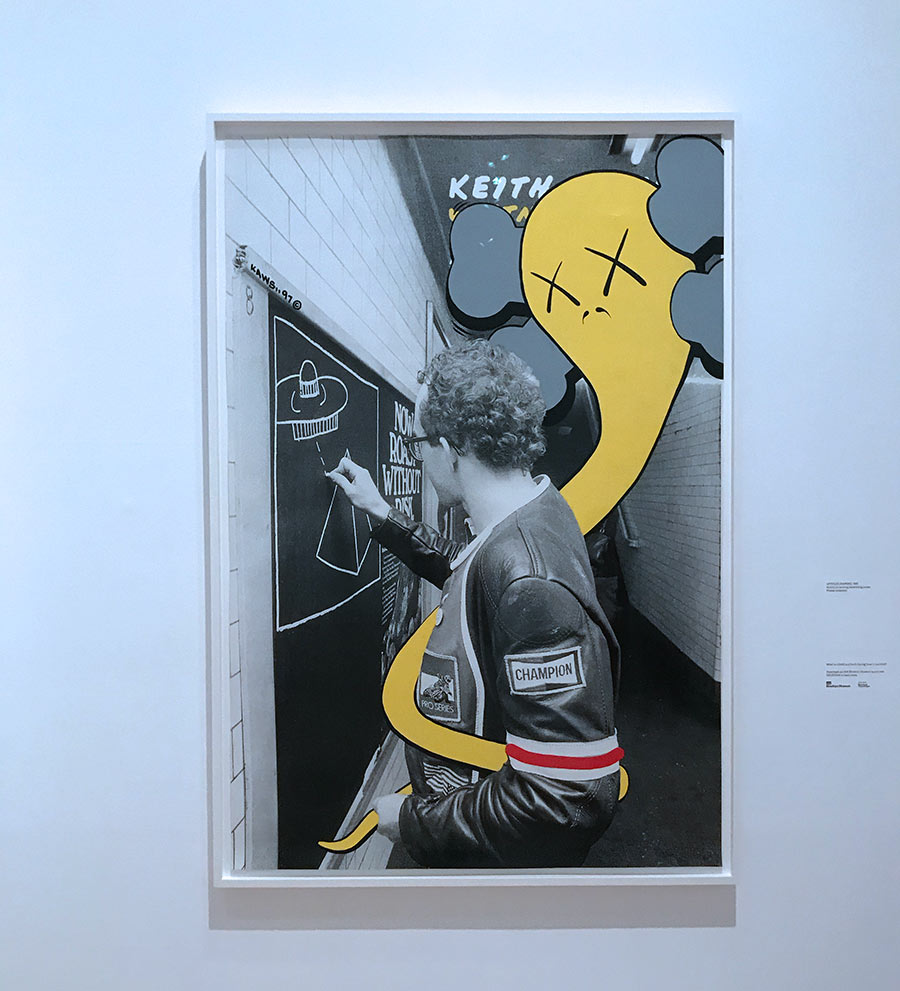
Street Artist Shepard Fairey is probably best known for making art and commerce symbiotic with the interplay of his screenprints, stickers, vandalism, street art, and the Obey brand, and Keith Haring literally opened his own Pop Shop store in Soho way back in the 1980s; his illegal vandalism in the subway being de facto advertisements for products you could purchase above ground. Banksy’s movie title Exit Through The Gift shop may have been intended as a sarcastic critique, but everyone now considers it a command. Curatorial considerations may not be explicitly tied to the development of product lines, but the discussions of both may happen in the same marketing meeting.
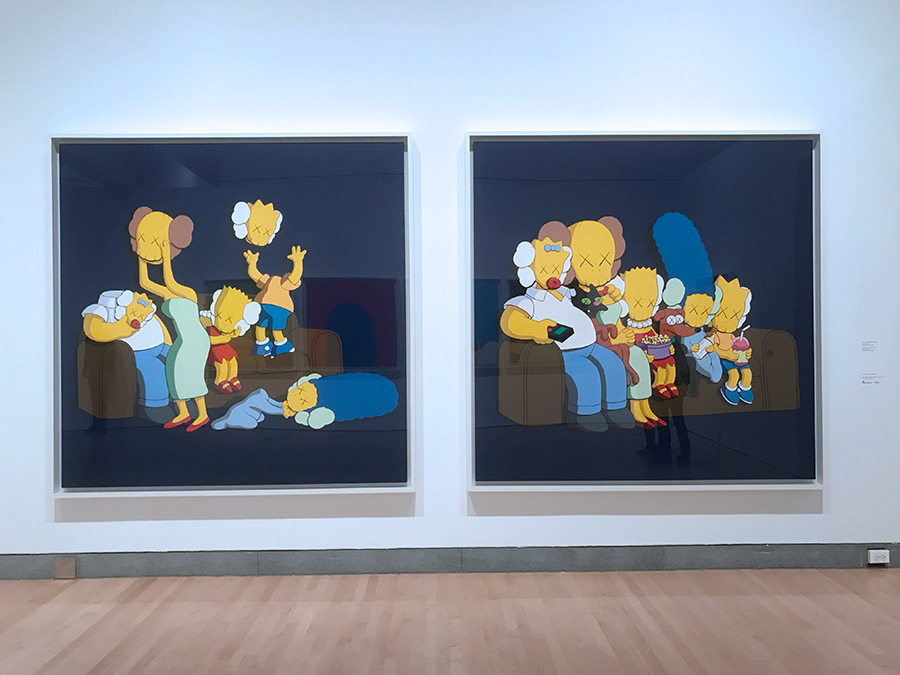
Today, the real power players in the cultural currency game are the artists who can market their own products, sometimes commanding licensing fees simply for being featured on retail platforms and venues. In the case of KAWS: What Party at the Brooklyn Museum, the sales of the Brooklyn artists’ “Companion” toy collectibles exhausted supply within hours of the opening, and the mania of buying multiples in multi-visit daily shopping trips created lines so long that they backed up into the exhibition. The museum store began posting strict buying limits and regulations of items sold.
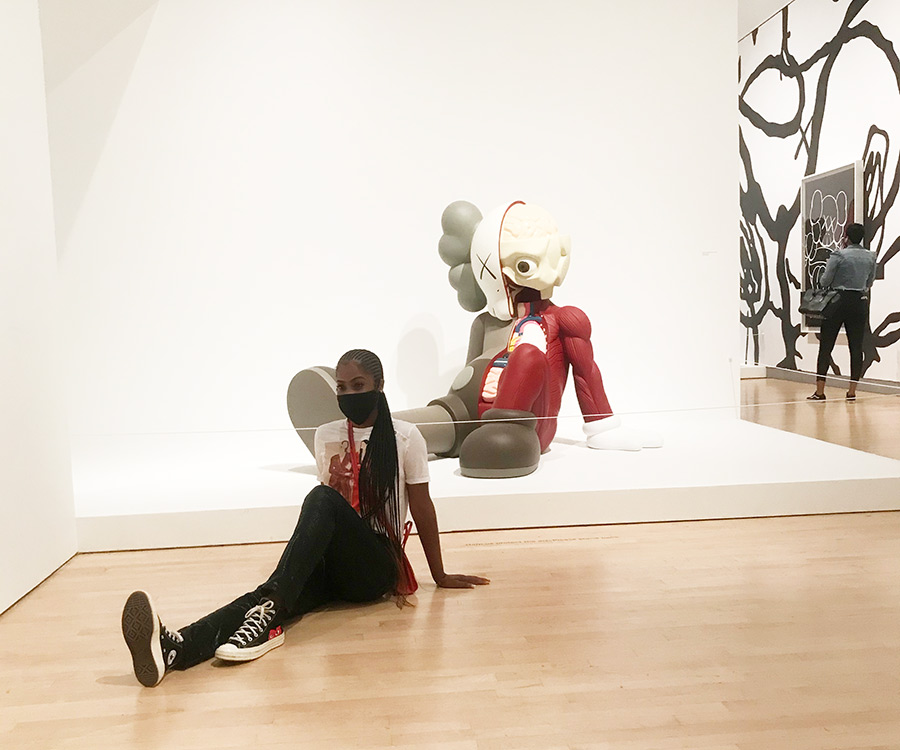
On a recent weekday, eager groupings of friends and family arrive into the Brooklyn Museum lobby with palpable excitement, and nearly all pose in front of the towering 18-foot high wooden KAWS sculpture, “Along the Way.” Our guide, Sharon Matt Atkins, Deputy Director for Art, tells us that the response to the show in terms of attendance has been robust. As we wend through the galleries, we see guests in their teens and twenties often posing before sculptures and paintings, imitating the forward bending head, cradling their face in hands with a mocked portrayal of being overwhelmed. The striking of poses in front of artworks is possibly as much a part of the museum experience as excitedly identifying which pop culture character or famous painting had been appropriated for an X-eyed portrait. Those images are spread across social media, and the KAWS character is seen by many more.
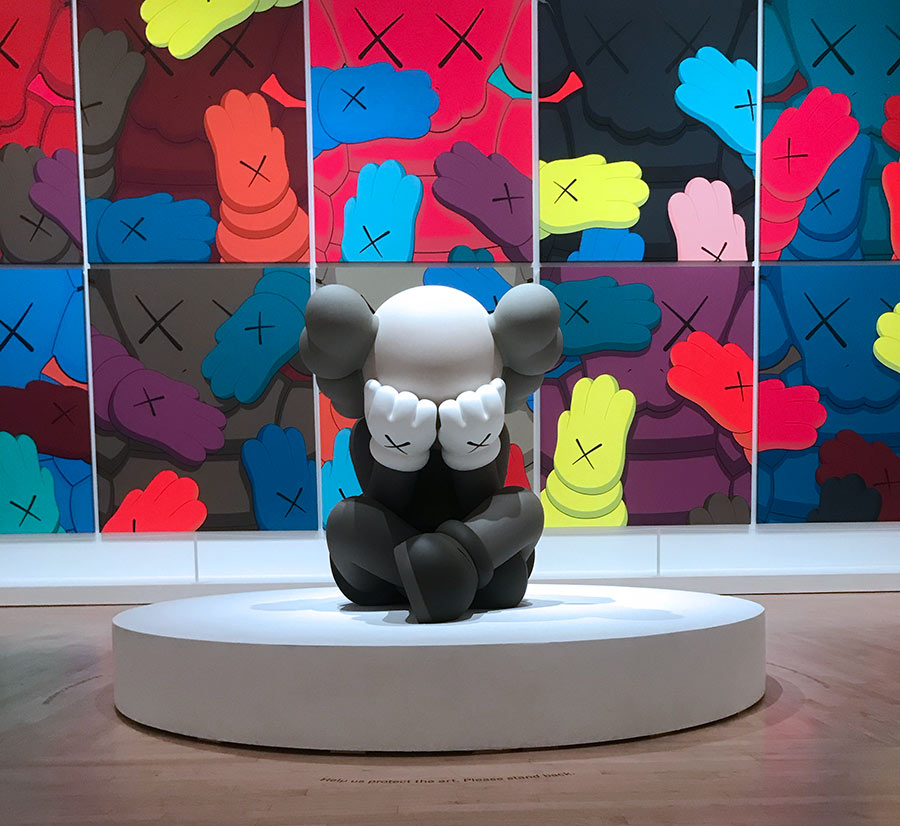
After the show, guests queue in line to the store to pick up a catalog, tote bag, lapel pin, or other KAWS product. Artists names like Matt Groenig, Charles Schultz, and Hugh Harman may not trip off the tongue, but their repurposed characters like the Simpsons, Snoopy, and Mickey have all been burned into western mass culture history. Those nostalgic and reassuring associations are captured by KAWS repeatedly and altered with modest modification.
Matt Atkins observes that KAWS discovered the power of pop references to manga and anime in the subculture Otaku were crucial to forming bonds with Japanese people in ways that language would not allow during his trips to Tokyo in the late 1990s. The power of that kind of cross-cultural communication stayed with him and is offered as an explanation for referencing commonly known images. Indeed, this method of reinterpretation of pre-established icons and personalities has been employed on the street for many years, including right now with street artists like The Postman who reworks famous images of celebrities and characters like Syd Vicious, Elton John, Willy Wonka, Boy George, Grace Jones, and Elvis Presley. The contemporary acid-pop treatment he pours on the photographs is eye-catching in doorways or alleys. If you like what you see on the street, you can go to his website store to purchase them as prints or customized aerosol spray cans. Before ‘always on’ connectivity, these bridges between art and collecting were never so seamless.
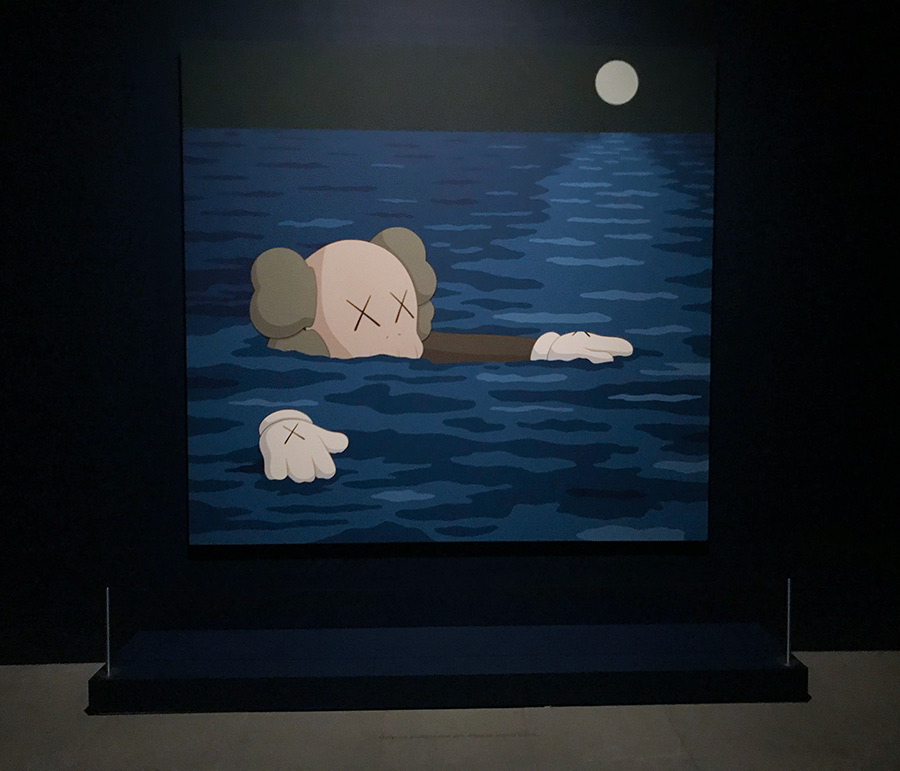
As new rules in street art and commerce come online daily, perhaps we’ll be developing new terminology to describe and novel ways to define the roles of museums, exhibitions, and stores. Similarly, norms about patronage, fandom, art history, civic engagement, and cultural literacy, no doubt, are evolving at a rapid pace in ways previously unconsidered.
As in the ‘woke’ culture that the art world is trying to enter, we’re having difficult but necessary conversations revolving around identity politics and systemic, historical inequities. Maybe we should also discuss the role of commerce in mediating decisions about which rebellious graffiti or street artists we are heralding or overlooking.
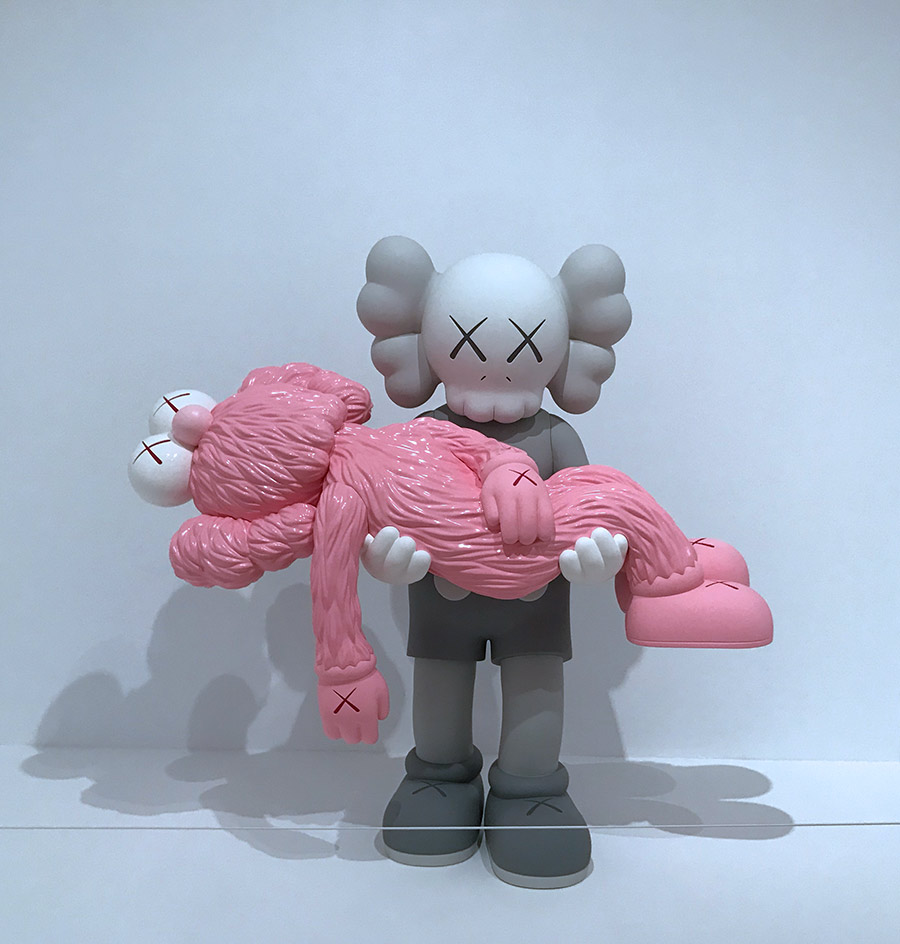
What clinches the final decision when granting a gallery or exhibition replete with all the trimmings? In an art practice born from typically marginalized sectors of the dominant culture originally, who is currently getting the brunt of the attention, and why? What role does consumer culture, pop sensibility, and commodification of our creative commons play when selecting which artists from the graffiti and street art fields are elevated – and which ones are not. As always, there are few obviously correct answers. But the questions may lead us in new directions.
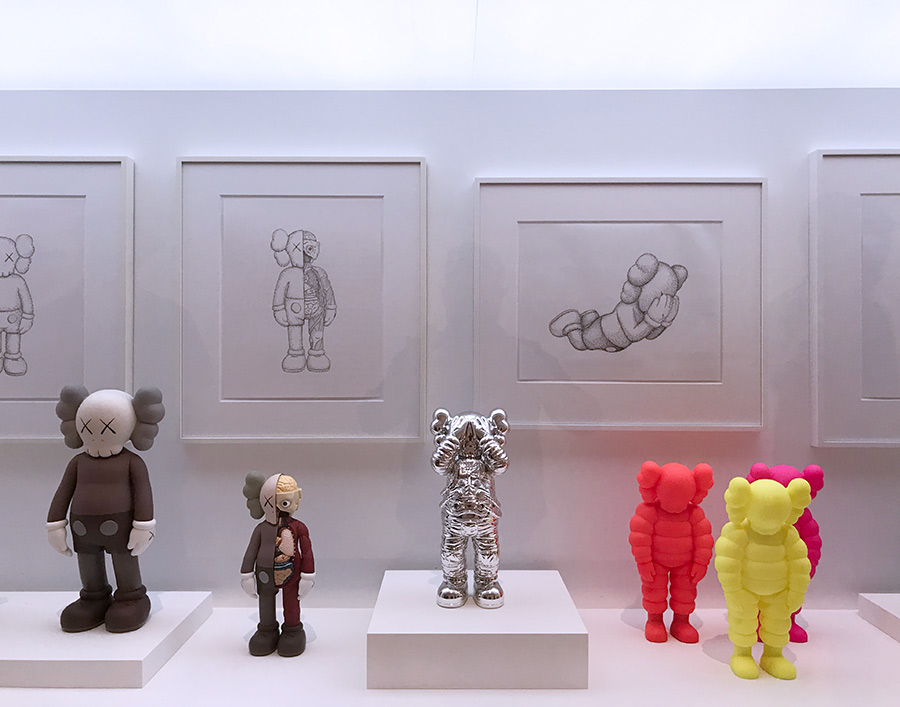
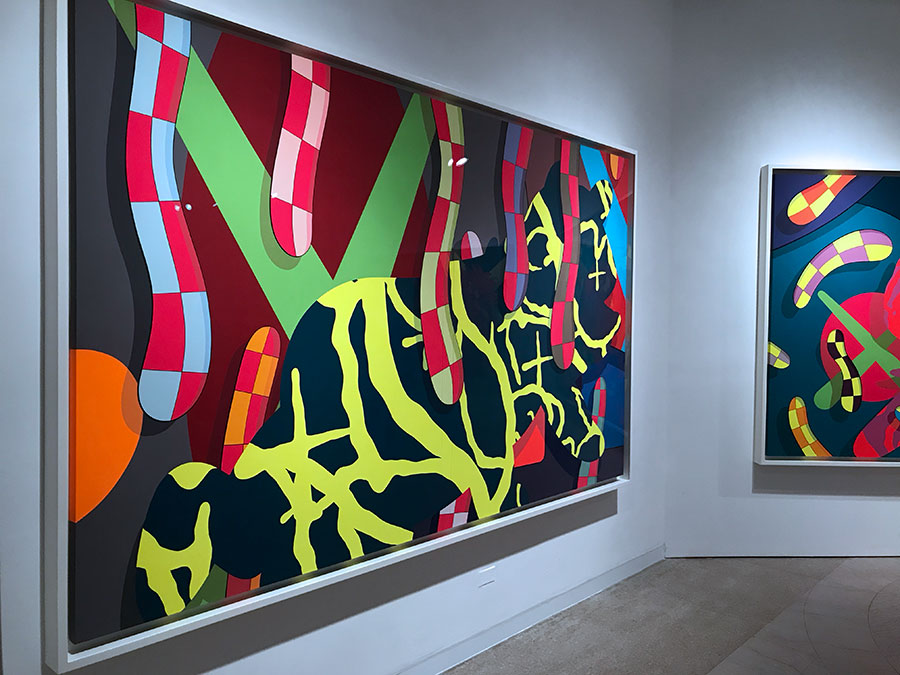
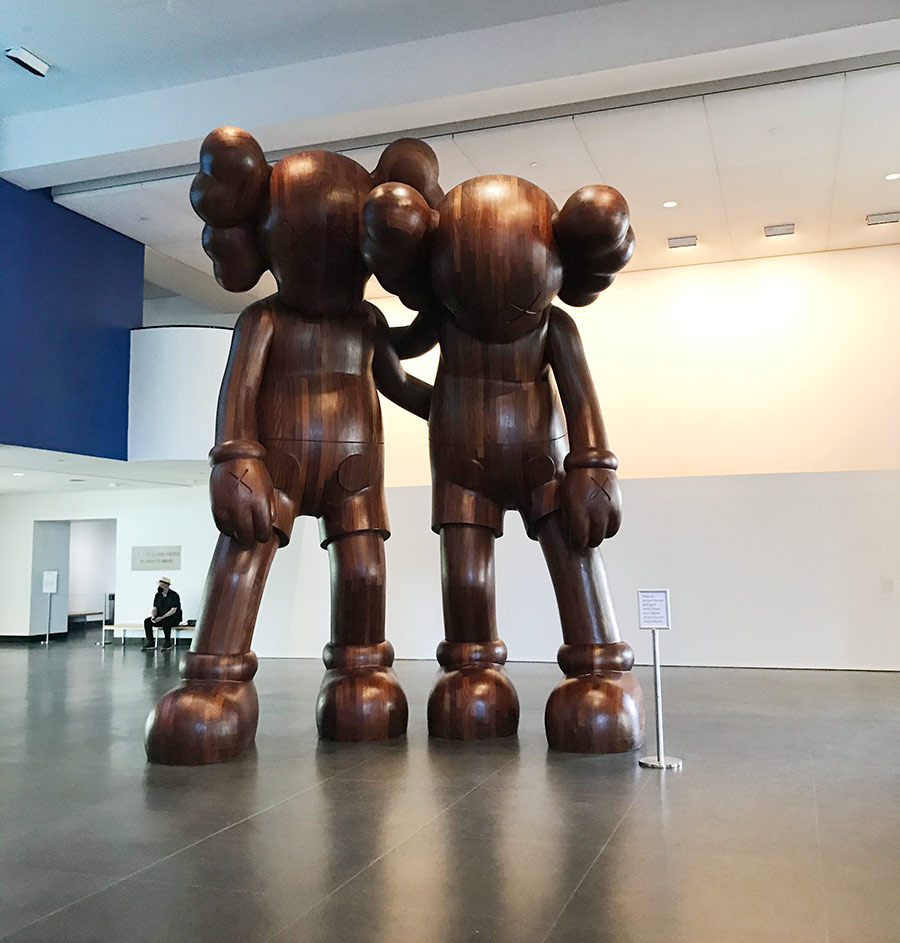
KAWS: WHAT PARTY
February 26–September 5, 2021
Morris A. and Meyer Schapiro Wing and Iris and B. Gerald Cantor Gallery, 5th Floor
For museum’s hours of operation and tickets click HERE
Other Articles You May Like from BSA:
Welcome to BSA Images of the Week! One of the first graffiti writers to name themselves after a laptop, ACER got up big on the front of the New Museum this week, which may be one of the most r...
Our weekly focus on the moving image and art in the streets. And other oddities. Now screening : 1. Artful Ad Busting: Vermibus Melt Ads and Minds Across Europe 2. HotTea is an MN Original: Ba...
An Inside Look at The Imagination and Energy of Swoon and "The Road By Walking" This is how the road is made. Swoon invites you to take another step with her. It’s been an enormous success this week...
Chomp chomp, slurp slurp, spraaaaaaaaayyyyyyyyyyy spray sp sp sp spraaayyyyyyyyyy. The sounds of a sidewalk barbecue and painting a new piece on a wall on a hot July day in Brooklyn. Also honkin...
West Coast graffiti superstar RISK, bomber of freeway overpasses, designer of graffiti-inspired clothing, regaler of rap and rock videos; a self-aware sage-like lion-maned merging of Rick Rubins, Greg...
 BROOKLYN STREET ART LOVES YOU MORE EVERY DAY
BROOKLYN STREET ART LOVES YOU MORE EVERY DAY